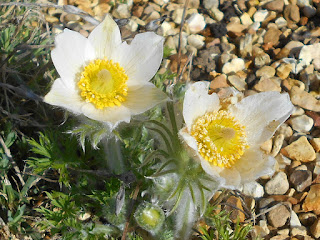 |
A pair of red glands on the petiole establish that this is a cherry.
Stefen Hill. 30 April, 2018
|
On the slopes of Beggars Bank, below Newnham windmill, I suspect that the wild cherry is truly native, with some impressive specimens of considerable age present. However, there may have been some planting, and the specimen shown came into blossom earlier than the remainder, suggesting that is genetically different.
 |
| Cherry on Beggars Bank, below Newnham Windmill. 19 April, 2018 |
 |
This 'coppicing' is likely to been a result of damage to the tree when just a
sapling. Christchurch Drive, Daventry. 14 March, 2018
|
All parts of the tree, with the exception of the fruit, are slightly toxic, containing alkaloids with a cyanide base. Poisoning must be extremely rare as no cases seem to have been recorded, at least in Britain. Oddly enough field mice open up the 'stone' to extract the kernel and the bill of the hawfinch has evolved specifically to crack open cherry stones, hawthorn and the like. Of course the wild cherry is a food source for many other creatures: for instance a number of aphid species are found, frequently on the leaf petioles.
Chris and I have an allotment upon which stands a rather nice specimen of cherry, not really wild of course but probably planted some twenty years ago.
 |
Our cherry provides fruit for the local birds.
Drayton Allotments. 25 April, 2018
|
Its shade renders part of the allotment unusable for vegetables but we are fond of it. It is you might say, a cherished cherry; it will be safe as long as we are the plot holders.
References
1. G. Claridge Druce, (1930)The Flora of Northamptonshire T. Buncle & Co. Arbroath
2. Gent, G and Wilson R. (2012) The Flora of Northamptonshire and the Soke of Peterborough Robert Wilson Designs, Rothwell















































